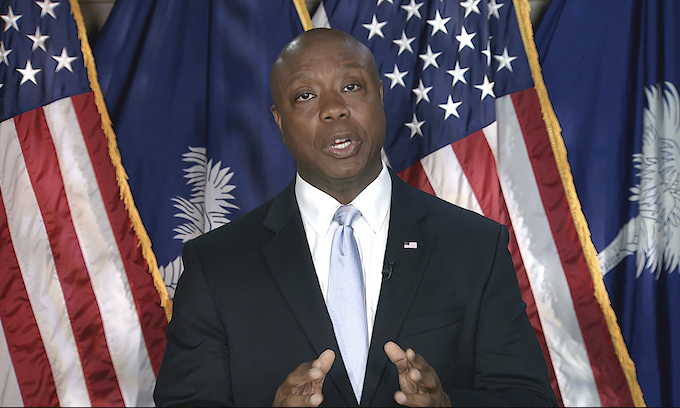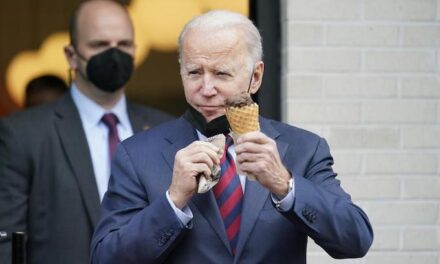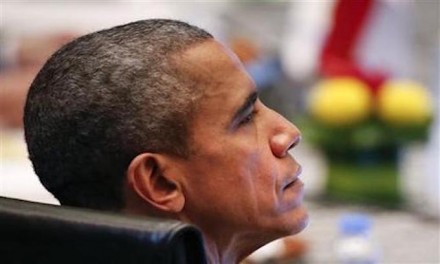Donald Trump is already beating Joe Biden; polls last weekend from The New York Times, Wall Street Journal, CBS News and Fox News all agree.
But the race is close: Trump’s lead is only 2-5 points, and there’s plenty of time for new events to tip the outcome in the eight months between now and Election Day.
Unfortunately for Biden, one new development voters can count on will certainly favor Trump: his announcement of a running mate.
How much difference will a fresh face on the GOP undercard make?
In recent decades, both parties have picked VPs to remedy the inexperience of presidential nominees.
George W. Bush in 2000 seemed like a foreign-policy lightweight next to Al Gore, who had served eight years as vice president and eight years before that as a U.S. senator.
So Bush chose former Secretary of Defense Dick Cheney as his running mate.
Barack Obama encountered similar doubts about his readiness to handle international affairs in 2008 — so he selected the chairman of the Senate Foreign Relations Committee, the long-serving Sen. Joe Biden, as his partner.
In 2016, Donald Trump had no government experience whatsoever and was a newcomer to the Republican Party itself.
He made a safe choice with Indiana Gov. Mike Pence, a reassurance to old-guard Republicans who might still harbor reservations about Trump after the primaries.
Losers’ slates from 2000 to 2016 typically used the VP slot to offer more of what voters were already getting at the top of the ticket, sometimes with added geographic appeal for a state that might otherwise not be in play.
What did House Speaker Paul Ryan bring to Mitt Romney’s ticket in 2012?
In theory, Wisconsin — in fact, nothing.
Sen. Tim Kaine added as little to Hillary Clinton’s 2016 effort: Virginia was already a blue state, and if Kaine was meant to be more moderate than Clinton, voters didn’t notice.
Biden’s choice of Kamala Harris in 2020 bore a resemblance to John McCain’s selection of Sarah Palin in 2008.
Both were chosen for diversity: in Palin’s case not only as a woman but as a conservative outsider paired with the experienced and maverick-y John McCain.
Harris had race and sex to commend her — and little else.
Her background as California’s attorney general hardly endeared her to progressives, and her stage presence endears her to no one.
She satisfies Democrats’ need for somebody who isn’t white and isn’t male.
Beyond that, she perhaps provided Biden with insurance that he wouldn’t be passed over in favor of a younger, more popular VP once 2024 came around.
Trump doesn’t have to worry about another nomination if he wins this time, and as a former president, experience is the least of his needs in a running mate.
Instead he has to think about a successor, particularly if he continues to face legal troubles after a second term.
A successor with the power to pardon is Trump’s last defense against progressives’ lawfare.
Will he risk his freedom on a running mate from the Nikki Haley or Mike Pence wing of the party?
No — Trump won’t try to “balance” his ticket with anyone from a rival GOP faction.
Loyalty is the top requirement.
After that, the criteria are still likely to be diversity and geography — considerations that proved unsuccessful in many recent selections, back to Walter Mondale’s choice of Geraldine Ferraro in 1984, when their ticket went on to win just one state and the District of Columbia.
South Dakota Gov. Kristi Noem and New York Rep. Elise Stefanik seem to be the women highest on Trump’s short list.
South Carolina Sen. Tim Scott is Trump’s likeliest Black running mate, though Trump might wonder if Scott would risk his own political capital four years from now to rescue him from legal peril.
Noem, Stefanik and Scott all hail from solidly red or blue areas; none would automatically shift a state.
Would a white male like Sen. J.D. Vance do so?
Vance’s Ohio is reliably in Trump’s column, but if Vance can appeal to blue-collar voters in neighboring Pennsylvania or other Rust Belt battlefields, he’ll help rebuild the map that won Trump the White House in 2016.
Pennsylvania, Wisconsin and Michigan are each in contention, along with Georgia and Arizona.
Suburban women have a powerful say in all those places, and even a marginal increase in Black support for Trump — or drop in enthusiasm for Biden-Harris — could be catastrophic for Democrats.
Small though the influence of a VP pick usually is, Trump has several ways to turn the right choice into a winning hand.
Biden, by contrast, has no choice: His ticket is the ticket of 2020, four years worse for wear, as Trump heads into their rematch with a new element on his side.
Daniel McCarthy is the editor of Modern Age: A Conservative Review. To read more by Daniel McCarthy, visit www.creators.com
COPYRIGHT 2024 CREATORS.COM



















Here’s hoping he makes a better choice, than he did with Pence.
Someone who will commit to sending state electoral count back if he loses. He may require written promissory style document.